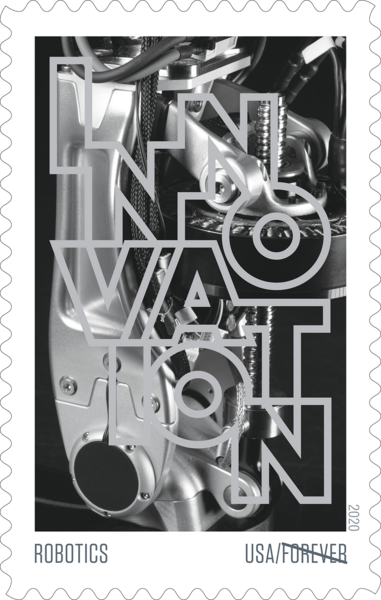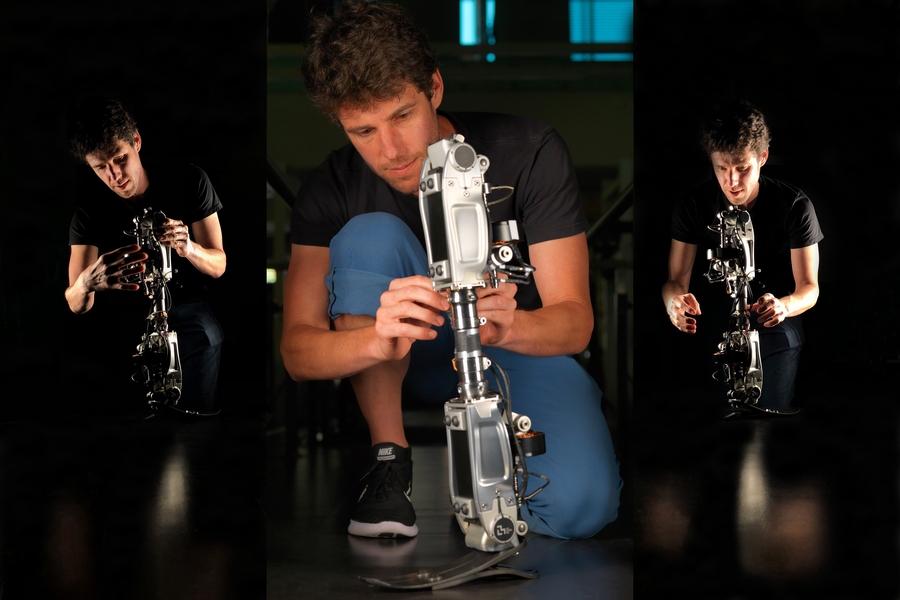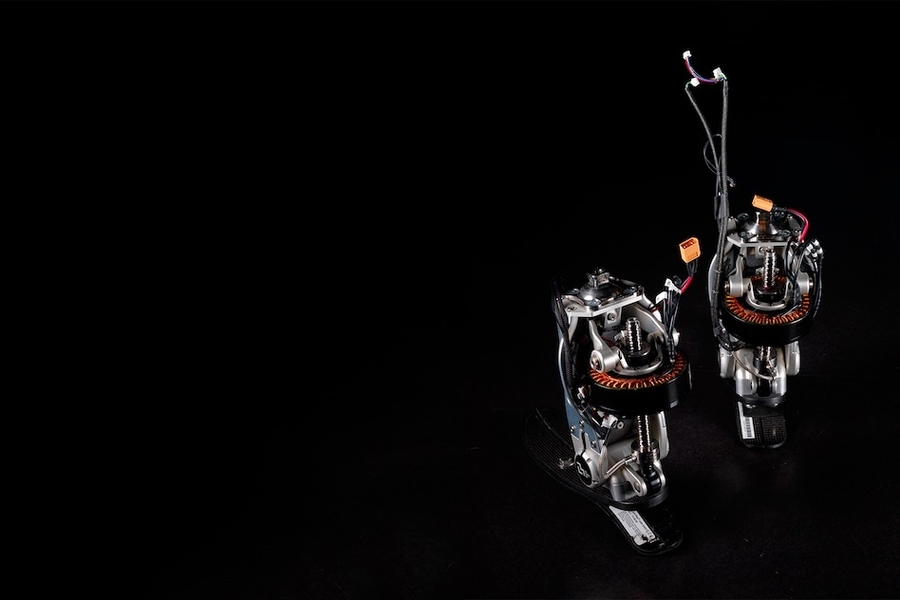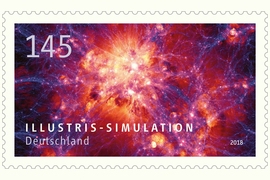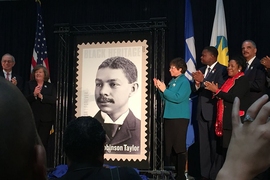Letter writers across the country will soon have a fun and beautiful new Forever stamp to choose from, featuring novel research from the Media Lab's Biomechatronics research group.
The stamp is part of a new U.S. Postal Service (USPS) series on innovation, representing computing, biomedicine, genome sequencing, robotics, and solar technology. For the robotics category, the USPS chose the bionic prosthesis designed and built by Matt Carney PhD ’20 and members of the Biomechatronics group, led by Professor Hugh Herr.
The image used in the stamp was taken by photographer Andy Ryan, whose portfolio spans images from around the world, and who for many years has been capturing the MIT experience — from stunning architectural shots to the research work of labs across campus. Ryan suggested the bionic work of the biomechatronics group to USPS to represent the future of robotics. Ryan also created the images that became the computing and solar technology stamps in the series.
“I was aware that Hugh Herr and his research team were incorporating robotic elements into the prosthetic legs they were developing and testing,” Ryan notes. “This vision of robotics was, in my mind, a true depiction of how robots and robotics would manifest and impact society in the future."
With encouragement from Herr, Ryan submitted high-definition, stylized, and close-up images of Matt Carney working on the group's latest designs.
Carney, who recently completed his PhD in media arts and sciences at the Media Lab, views bionic limbs as the ultimate humanoid robot, and an ideal innovation to represent and portray robotics in 2020. He was all-in for sharing that work with the world.
"Robotic prostheses integrate biomechanics, mechanical, electrical, and software engineering, and no piece is off-the-shelf,” Carney says. “To attempt to fit within the confines of the human form, and to match the bandwidth and power density of the human body, we must push the bounds of every discipline: computation, strength of materials, magnetic energy densities, sensors, biological interfaces, and so much more."
In his childhood, Carney himself collected stamps from different corners of the globe, and so the selection of his research for a U.S. postal stamp has been especially meaningful.
"It's a freakin' honor to have my PhD work featured as a USPS stamp," Carney says, breaking into a big smile. "I hope this feat is an inspiration to young students everywhere to crush their homework, and to build the skills to make a positive impact on the world. And while I worked insane hours to build this thing — and really tried to inspire with its design as much as its engineering — it's truly the culmination of powered prosthesis work pioneered by Dr. Hugh Herr and our entire team at the Media Lab's Biomechatronics group, and it expands on work from a global community over more than a decade of development."
The new MIT stamp joins a venerable list of other stamps associated with the Institute. Formerly issued stamps have featured Apollo 11 astronaut and moonwalker Buzz Aldrin ScD ’63, Nobel Prize winner Richard Feynman ’39, and architect Robert Robinson Taylor, who graduated from MIT in 1892 and is considered the nation’s first academically trained African American architect, followed by Pritzker Prize-winning architect I.M. Pei ’40, whose work includes the Louvre Glass Pyramid and the East Building on the National Gallery in Washington, as well as numerous buildings on the MIT campus.
The new robotics stamp, however, is the first to feature MIT research, as well as members of the MIT community.
"I'm deeply honored that a USPS Forever stamp has been created to celebrate technologically-advanced robotic prostheses, and along with that, the determination to alleviate human impairment," Herr says. "Through the marriage of human physiology and robotics, persons with leg amputation can now walk with powered prostheses that closely emulate the biological leg. By integrating synthetic sensors, artificial computation, and muscle-like actuation, these technologies are already improving people's lives in profound ways, and may one day soon bring about the end of disability."
The Innovation Stamp series will be available for purchase through the U.S. Postal Service later this month.

